Forget Columbus—This Man Was The First European To Reach North America
Forget Columbus—This Man Was The First European To Reach North America
If there were an award for biggest glory hog in human history, Christopher Columbus would have to be a prime candidate.
Putting aside the many instances of horrific behavior on his part (a bit like putting aside the Gulags to analyze Joseph Stalin’s achievements) Christopher’s most enduring legacy is also just utter bologna. He was not the first European in North America (indeed, he never even went to North America). He also didn’t, as might therefore be expected, found the first settlement there.
Was he close? Depends on your timescale. He only missed the mark by about 500 years.
Bjarni Herjólfsson
Like many offspring who leave home for greener pastures, Bjarni Herjólfsson made a pilgrimage every summer to his family home. He was a merchant captain in Norway. His parents were farmers in Iceland. It was a nice tradition.
The catch? Bjarni lived in the late 10th century. Air-service on the Norway-to-Iceland route was spotty. To make his yearly voyage, Bjarni was forced to navigate the treacherous route across the freezing Norwegian Sea.
Bjarni, though, was an adept sailor, and for most of his adult life, the trip went off without a hitch. But in 986 AD some unknown breakdown in communication led to a scheduling snafu. Bjarni showed up in Iceland that summer, only to hear (in what must have been a very awkward conversation) that his parents had immigrated to Greenland over the winter. Without so much as a postcard. That’s rough.
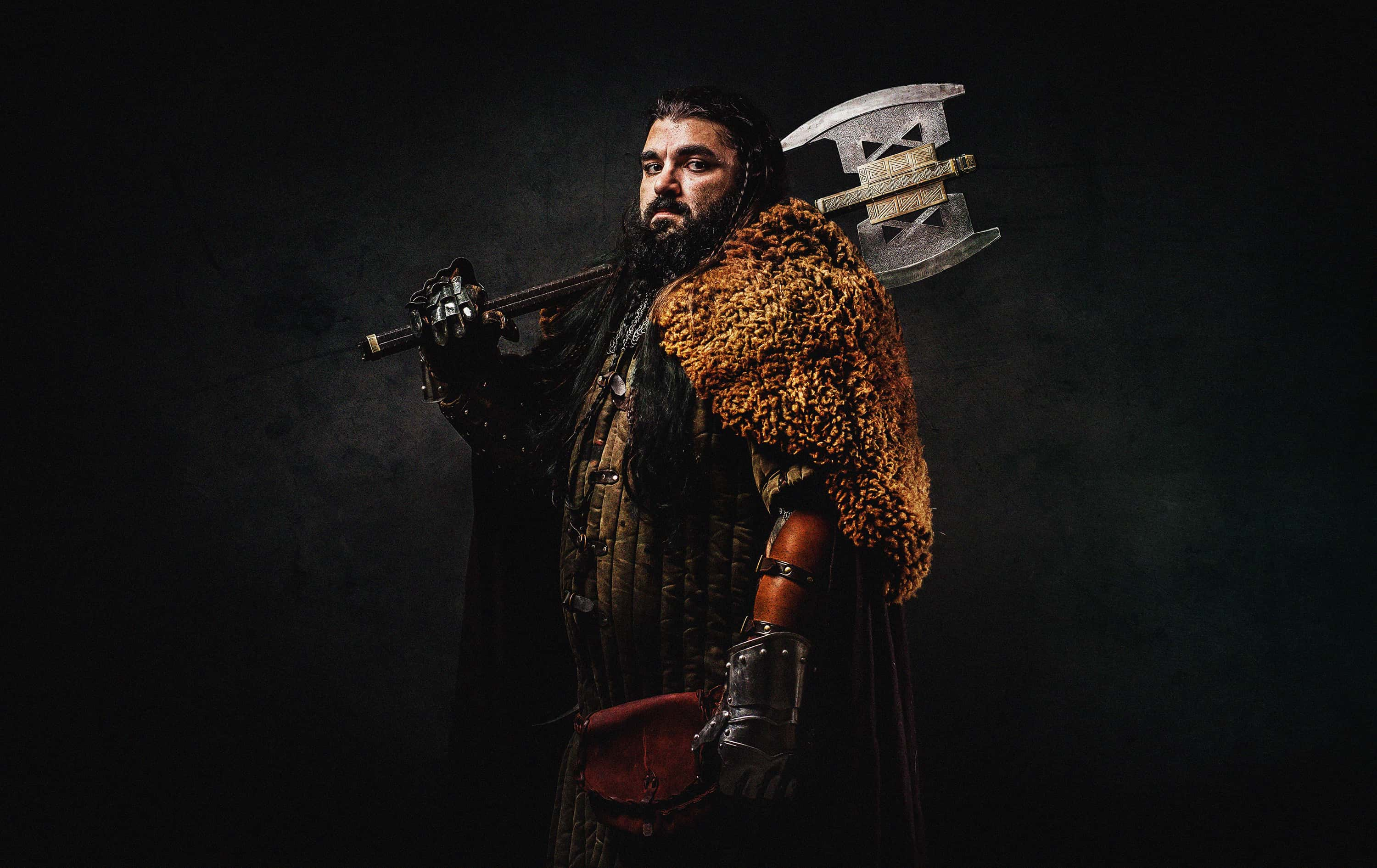
Getty Images
Not one to be easily deterred (or maybe immune to social cues) Bjarni collected a crew and resolved to follow them. Neither he nor any member of his crew had ever made the trip to Greenland. Bjarni, apparently, saw this as irrelevant. The result was the first ever European trip to North America.
Shortly into their voyage, the Bjarni expedition took the full brunt of a North Atlantic storm. They were blown wildly off course. For three days, they grappled with high-seas, wind, rain, and the torment of an angry ocean. On the fourth, the sun shone through.
Bjarni and his men collected their wits and reoriented themselves, only to spot a mysterious wooded land drifting on the horizon. It didn’t match the description they’d been given of Greenland. Where there should have been ice and rock there were rolling hills of forest and grass. Deterred, they chose not to go ashore.
Rumors Spread
Bjarni and his band of lost souls eventually made it back to Greenland. Once there, there was little immediate interest in their misadventure. The Vikings were a famously hardy people, with little time for weakness or failure.
Eventually, though, Bjarni traveled to Norway, where the rumors of his sighting on the far side of the world roused a significant degree of interest. In the words of Professor TJ Oleson (University of Manitoba), “There are strong arguments for the view that the three lands seen by Bjarni were Newfoundland, Labrador, and Baffin Island.”
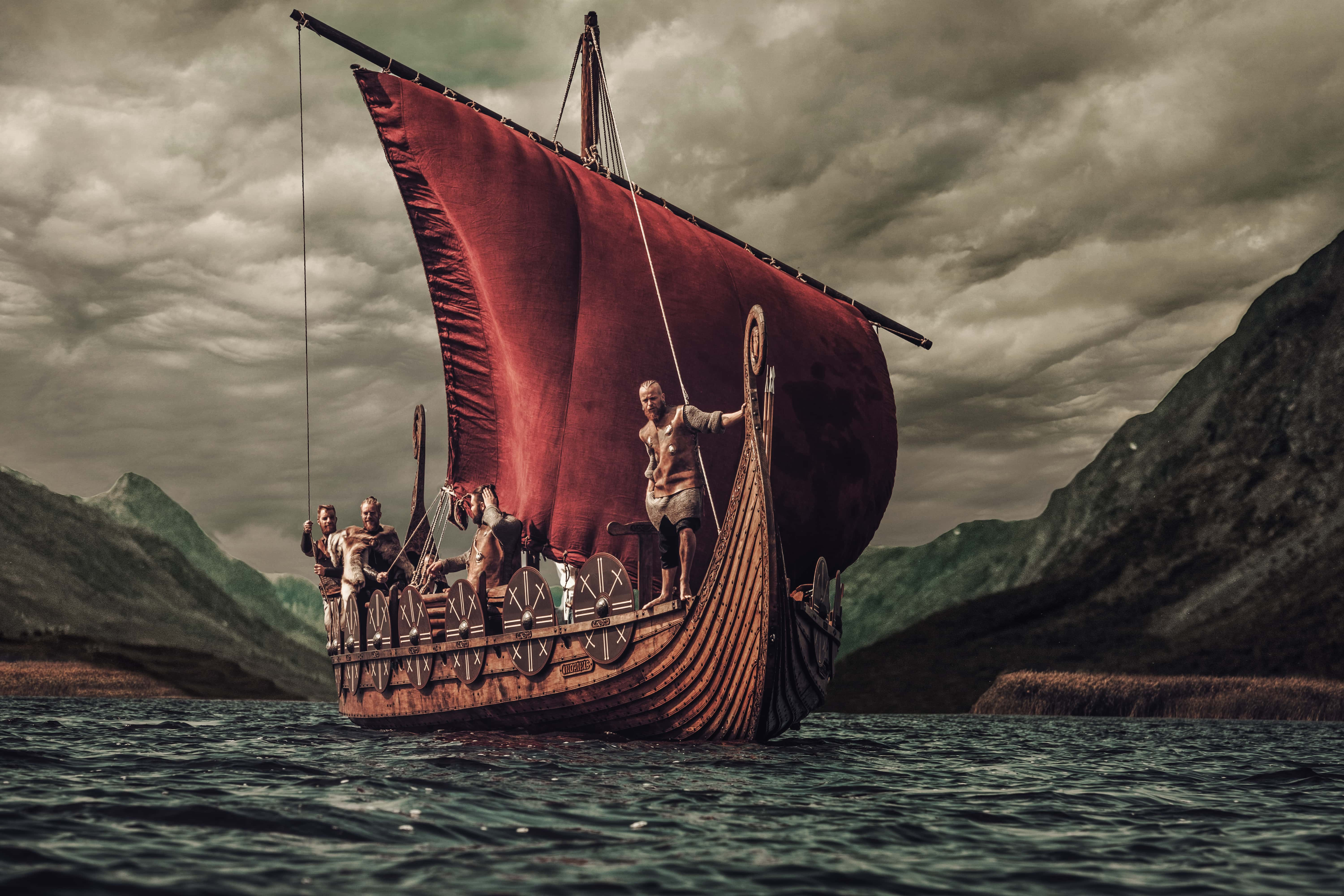
Getty Images
Leif Erikson
Bjarni’s venture may have been a failure, but his influence was only beginning to spread.
After returning home, stories of Bjarni’s accidental discovery spread like wildfire among the seafaring people of Norway. Among those enthralled listeners? None other than the legendary Norse explorer, Leif Erikson.
Leif had himself experienced a similar accidental discovery on a previous voyage from Norway to Greenland, during which he’d been blown off course and encountered two shipwrecked sailors who claimed to have visited a land of “self-sown wheat fields and grapevines” beyond Greenland. Their description matched Bjarni’s stories.
Excited by the possibilities, Leif launched his own expedition. He even bought the original ship Bjarni had used for this voyage. Together with a crew of 35 men, he set off for new horizons.
Following Bjarni’s route to the best of his ability, Leif and his men first landed on a rocky outcrop near Greenland (today thought to be Baffin Island). Pushing on, though, they eventually founded a settlement they called Leifsbúðir (meaning Leif’s Booths) in an area they came to call Vinland, after the grapes they found growing in abundance there.
If the Norse legends are true, it was the first permanent European settlement in the New World.
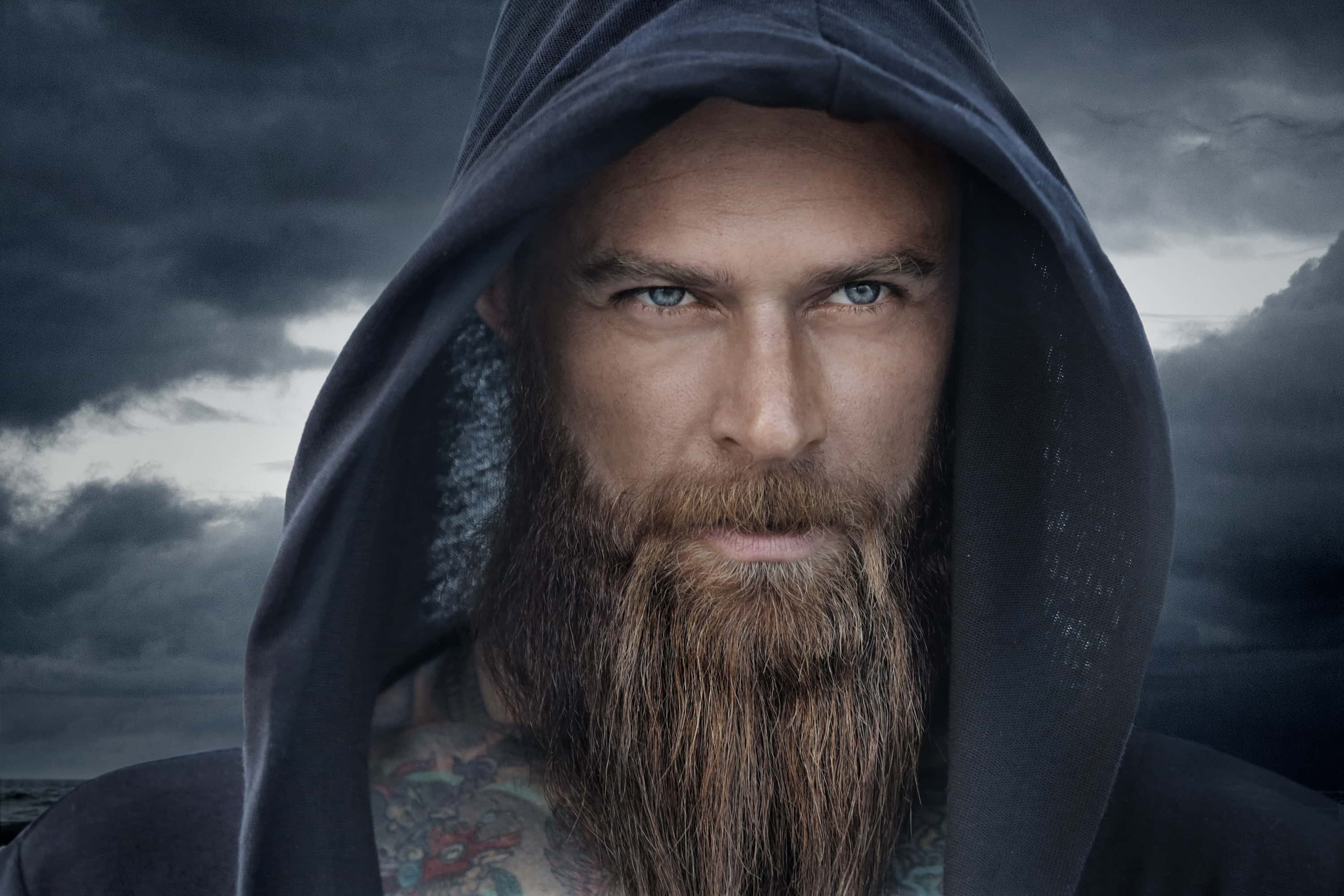
Getty Images
L’Anse aux Meadows
The story of Bjarni and Leif’s discoveries were recorded in writing by two early Norse histories: The Saga of Erik the Red and The Saga of the Greenlanders. Both were written around the year 1200, and tell mildly differing stories off their experiences. For years, the veracity of the Sagas was cast in doubt. Perhaps unsurprisingly, many historians were careful not to trust accounts that had been written primarily as popular entertainment.
L’Anse aux Meadows changed all that.
In 1960, two Norwegian archaeologists discovered the remains of a Norse settlement in Newfoundland, Canada, at the northernmost tip of the island. The village where they made their discovery is called L’Anse aux Meadows.
To this day, the site at L’Anse aux Meadows remains the only confirmed Norse settlement ever discovered in North America. It stands as definitive evidence of pre-Columbian Transatlantic European exploration.
At the very least, L’Anse aux Meadows proves that the Norse explorers made it to North America. Many experts propose that the site may be the location of Leif Erikson’s settlement.
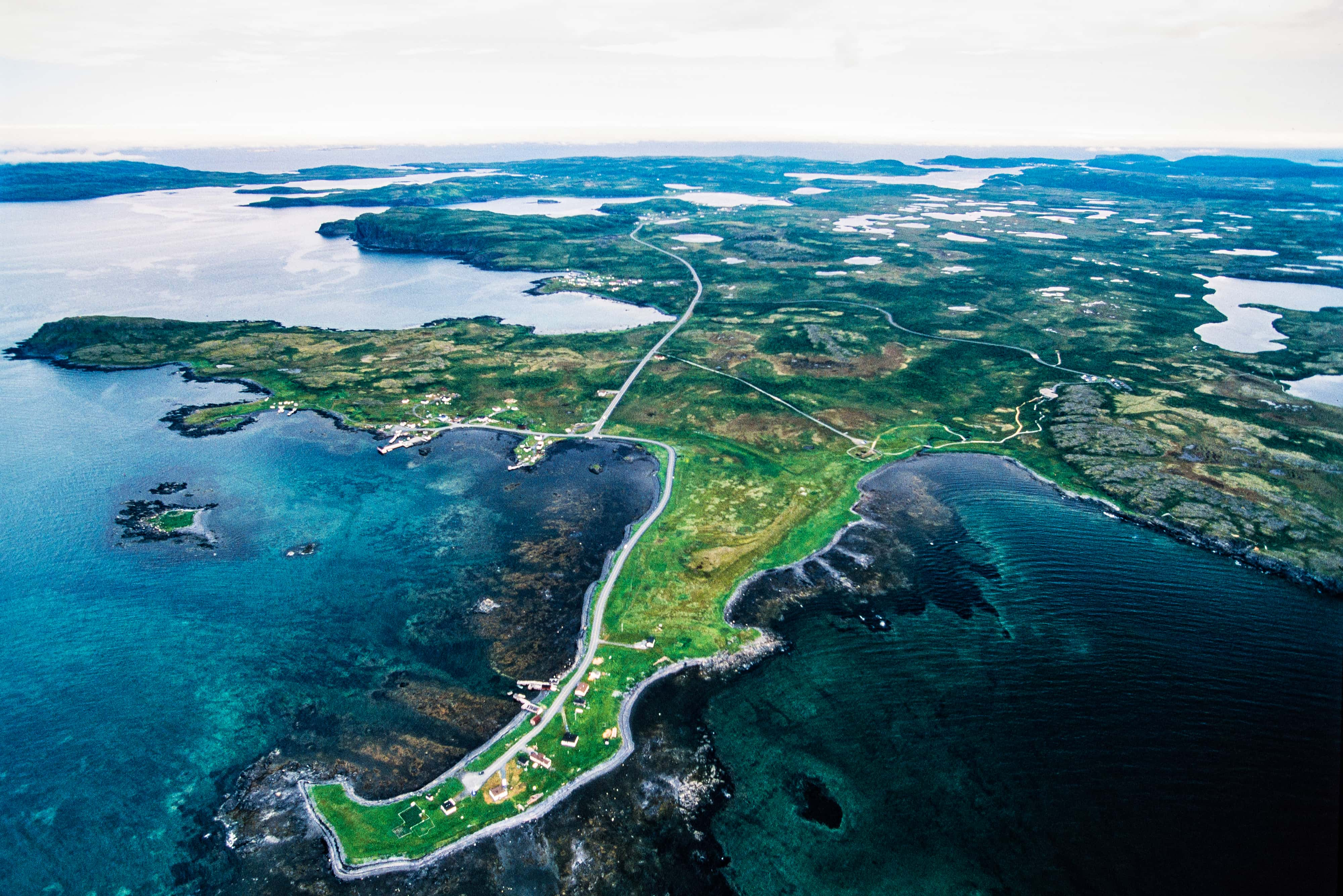
Getty Images
Who Was the First European to Discover North America?


It is well known that Christopher Columbus ‘discovered’ North America in 1492. Except, of course, he didn’t.
Indigenous peoples had been making their way across what was then a land bridge from Asia for perhaps 20,000 years before him. And we now know that he was not even the first European to become aware of the continent. That claim belongs to Viking voyagers and we are lucky that several surviving sagas tell us what happened.
Understandably, historians are sometimes sceptical of relying on such accounts. Often they were written up hundreds of years after the events they discuss, and sometimes include some highly suspect references to supernatural goings-on which are very unlikely to have happened in real life.
Luckily, recent archaeological discoveries have given us firm evidence to back up the saga stories.

Many of us use Bluetooth technology every day, but know nothing or little of its namesake. And there is little to be known of the King of Denmark Harald “Bluetooth” Gormsson, except that he is credited with introducing Christianity to Denmark. In this episode, Søren Sindbæk explains what we do know of Bluetooth, and about his remarkable archaeological discovery of Danish Ring Forts. Søren is a Professor at the University of Aarhus.
Bjarni Herjólfsson sets off for Greenland
The name of the first European to sight North America has been largely forgotten. It was not Leif Eriksson, whose fame was largely secured by his expeditions to the continent, nor was it Erik the Red (who indeed never went there). It was rather Bjarni Herjólfsson who journeyed from Norway to his home in Iceland in the year 985.
Arriving back in Iceland, he learned that his parents had recently sailed west to Greenland with an adventurer (and something of a rogue), the aforementioned Erik the Red. Bjarni decided to go after them and set out for Greenland. Unfortunately the journey quickly started to go wrong.
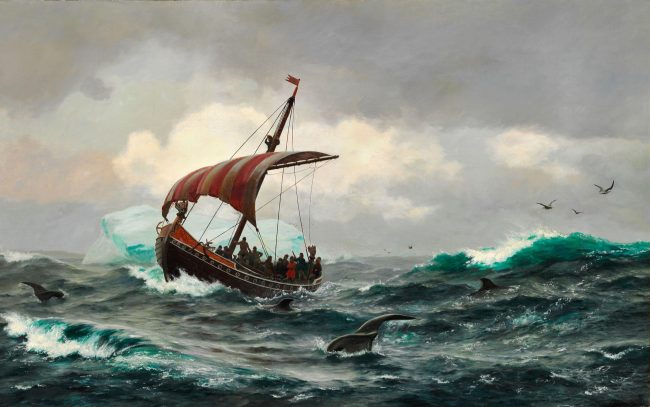
Carl Rasmussen’s painting depicting the Viking voyages to Greenland.
The first issue was that there was insufficient wind for the ship to make good speed. Then the curse of all mariners, fog, descended on them. They lost track of time, meandering around aimlessly in the mist without a clue where they were.
At last the fog lifted and they caught sight of land. Any euphoria they felt was short-lived, for it quickly became apparent that this was a land no one from Europe had ever seen before. Unlike Greenland, it was carpeted in thick forests and there were no glaciers in sight.
To some Vikings this might have been exactly the kind of excitement that they were searching for. We think of them of being spurred on by a spirit of adventure, an everlasting quest for the unknown. Bjarni however was not of this type.
Rather than putting ashore to find out more, he ordered the ship to turn around and head for Greenland – or where they thought Greenland to be. They soon arrived at their destination. As far as we know, Bjarni never set eyes on North America – for it is now generally thought this is what he caught a glimpse of – again.
Leif Eriksson sets foot in North America
It was on Bjarni’s return that Leif Eriksson enters the story. He heard of Bjarni’s epic voyage and bought his ship off him, determined to find out more about the unexplored lands in the west.
Leif was very much an adventurer. He had spent time in Norway before heading for Greenland and now he wished for another thrilling voyage into the unknown.
Thanks to two surviving accounts, The Greenlanders’ Saga and Erik the Red’s Saga, some details of his (and others) journeys to North America have survived.
Three geographical regions are named as being visited by Vikings; Helluland (‘slab-stone land’ – possibly Baffin Island), Markland (‘forest land’) and most famously Vinland (‘wine land’).

‘The Landing of the Vikings’ by Arthur C. Michael, painted 1919. It must be noted that Vikings did not wear horned helmets, contrary to this image.
Leif did not stay on the continent for long. He over-wintered there and then returned to Greenland along with a welcome supply of timber, vital in the Viking world for ships, houses and furniture amongst other things. Others followed in his footsteps though. His brother Thorvald did so and stayed for several years.
However, it soon became apparent that they did not have the country to themselves. They came across an indigenous population, the skrӕlings as they became known (the word translates approximately as ‘barbarians’).
There was soon a clash between them in which all but one of the indigenes in the party they came across was killed. In response, the indigenes attacked the Vikings with a flotilla of boats. One of their warriors loosed an arrow which struck Thorvald in an armpit. He soon after died of his wounds.

Another brother of Leif Eriksson’s, Thorstein, also led an expedition to the continent but atrocious weather conditions meant that it was aborted.
Thorstein’s death during an epidemic in Greenland soon after meant that he did not try again. His place was taken by Thorfinn Thordarson (known as Karlsefni). Not only did Karlsefni decide to try again in Vinland but he also married Thorstein’s widow, Gudrid.
He took with him sixty men, five women (including Gudrid) and livestock. They also met parties of skrӕlings when they put shore. There was initially some trading between the two groups but they soon came to blows too.
Eventually, Karlsefni’s group returned to Greenland – after Gudrid gave birth to a son called Snorri, the first-known European child to be born in North America.

Eiríksstaðir, the home of Erik the Red in Haukadalur, Iceland. Image source: Bromr / CC BY-SA 3.0.
The last expedition
One last expedition followed, led by Thorvard. He was married to Freydis, the uncontrollable daughter of Erik the Red.
Freydis showed herself to be the archetypal villainess. With their party was a group of Icelanders who Freydis later decided to murder. She had previously been in Karlsefni’s party and, when they were attacked, she had fought off the skrӕlings using unconventional tactics involving the baring of her breasts in the general direction of the indigenous warriors.
Historians are slightly sceptical about these accounts of Freydis, noting the resemblance of her name to the Norse god Frey/Freyr (male/female twins in the Viking pantheon). Similarly, Gudrid, whose actions are generally portrayed as being exemplary, has a name that is suspiciously similar to that of the Christian God.
In this period the old pagan Viking religion and recently arrived Christian religion were fighting for supremacy. Therefore, it is possible that some of these accounts may be allegorical rather than literal.

The Kingdom of the Franks was the largest post-Roman barbarian kingdom in Western Europe, ruled by the Franks during Late Antiquity and the Early Middle Ages. But how did it fare against Viking attacks?
A modern assessment
Doubts about the accuracy of the sagas force us to look at other forms of evidence for the Vikings in North America. This came to a head in the 20th century. It is now time to turn our attention to the so-called Vinland Map and a remarkable husband and wife archaeological team.
The map appeared in 1965. It purported to show Viking settlements in North America and made specific reference to Leif Eriksson and Bjarni Herjólfsson. Vinland, Helluland and Markland were clearly marked. H
istorians were overjoyed at the discovery; that is until it was revealed that it was a fake, probably crafted by a 20th century Yugoslav professor of history, Luka Jelič.

The Vinland Map.
It was the husband and wife team who gave real cause for excitement. A Norwegian couple, Helge and Ann Stine Ingstad, were curious about the origins of an apparent archaeological site at L’Anse aux Meadows on Newfoundland.
Extensive investigation over a number of seasons revealed buildings constructed in a distinctive Norse style which were radiocarbon-dated to around the year 1000.
The site was never large but the discovery of ships’ rivets there suggests that this was something of a stopover point from which perhaps Viking trading (or raiding) parties could push on, possibly to the North American mainland.
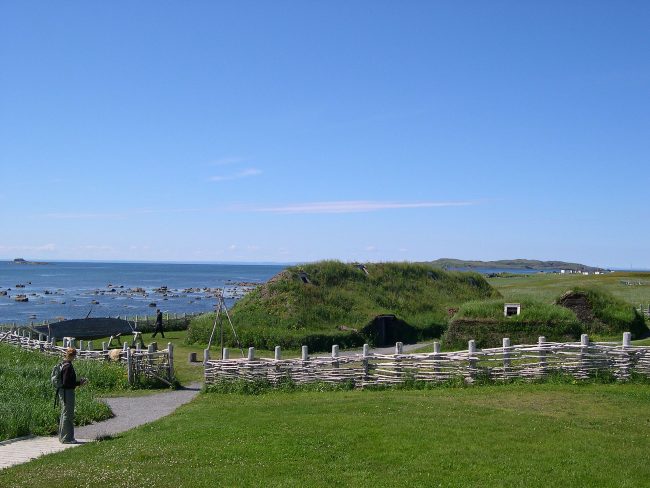
An authentic Viking settlement in Newfoundland, Canada. Image source: Dylan Kereluk / CC BY 2.0.
From time to time new evidence emerges in North America that hints at a wider Viking presence in the continent beyond the rather peripheral position of Newfoundland.
So far, any evidence has been inconclusive. Perhaps one day more conclusive archaeological finds will be uncovered, proving that the Vikings pushed further into the continent.
As they say, watch this space.
W. B. Bartlett has worked across the globe in over thirty countries and has spent time in over seventy. He is the author of many history books including titles on the Titanic, Medieval History, King Cnut and the Dam Busters. Vikings, A History of the Northmen is his most recent work and will be published on 15 November, by Amberley Publishing.
Leif Erikson: First European in North America
:max_bytes(150000):strip_icc()/GettyImages-1009993314-860e8a0aa155476e9485bdc268370d9b.jpg)
Patti Wigington is a pagan author, educator, and licensed clergy. She is the author of Daily Spellbook for the Good Witch, Wicca Practical Magic and The Daily Spell Journal.
Leif Erikson, sometimes spelled Eriksson, is believed to have been the first European to discover and explore the North American continent. A Norse adventurer, Erikson made his way to Vinland, on the coast of what is now Newfoundland, and may have gone even further into the North American interior.
Leif Erikson Fast Facts
- Born: About 970 c.e., in Iceland
- Died: About 1020 c.e., in Greenland
- Parents: Erik Thorvaldsson (Erik the Red) and Thjodhild
- Known For: Founded a settlement in what is now Newfoundland, making him the first European to set foot in North America.
Early Years
Leif Erikson was born around 970 c.e., most likely in Iceland, a son of the famed explorer Erik the Red—hence, the patronymic Erikson. His mother was named Thjodhild; she is believed to have been the daughter of a Jorund Atlason, whose family may have had Irish origins. Leif had a sister, Freydis, and two brothers, Thorsteinn and Thorvaldr.
![]()
Young Leif grew up in a family that embraced exploration and the Viking way of life. His paternal grandfather, Thorvald Asvaldsson, had been exiled from Norway for killing a man, and subsequently fled to Iceland. Erikson’s father then got in trouble in Iceland for murder, around the time Leif was about twelve years old. Since they were as far west at that point as they could possibly go, Erik the Red decided it was time to hit the water and set sail. There were rumors that land had been sighted far to the distant west; Erik took his ships and discovered the place he would call Greenland. Allegedly, he gave it that name because it sounded appealing and would entice farmers and other settlers to relocate there.
Erik the Red, like most adventurers, took his family with him, so Erikson and his mother and siblings ended up being pioneers in Greenland, along with several hundred wealthy farmers who wanted to colonize the land.
Exploration and Discovery
Some time in his late twenties or early thirties, Erikson became a sworn hirdman, or companion, of Olaf Tryggvason, the King of Norway. However, on his way to Norway from Greenland, Erikson got blown off course, according to the Norse sagas, and ended up in the Hebrides islands, just off the coast of Scotland. After spending a season there, he returned to Norway and joined King Olaf’s retinue.
![]()
Leif Erikson settled a colony at what is now L’Anse Aux Meadows, Newfoundland. Danita Delimont / Gallo Images / Getty Images Plus
Olaf Tryggvason was instrumental in converting the Norse people to Christianity. He is said to have erected the first Christian church in Norway and often converted people with threats of violence if they failed to comply. Tryggvason encouraged Erikson to be baptized as a Christian, and then tasked him with spreading the new religion around Greenland.
According to The Saga of Erik the Red, which is the only real source material for Erikson’s journeys, during his travel from Norway to Greenland, Erikson may have again been blown off course in a storm. This time, he found himself in a strange land that a merchant, Bjarni Herjólfsson, had once claimed existed to the west, although no one had ever explored it. In other accounts of the story, such as The Saga of the Greenlanders, Erikson deliberately set out to find this new land, some 2,200 miles away, after hearing Bjarni Herjólfsson’s story of an uninhabited place that he’d seen from a distance while at sea, but never set foot upon.
[Erikson] was tossed about a long time out at sea, and lighted upon lands of which before he had no expectation. There were fields of wild wheat, and the vine-tree in full growth. There were also the trees which were called maples; and they gathered of all this certain tokens; some trunks so large that they were used in house-building.
After discovering wild grapes in abundance, Erikson decided to call this new place Vinland, and built a settlement with his men, which was eventually named Leifsbudir. After spending a winter there, he returned to Greenland with a ship full of bounty, and brought a fleet of several hundred settlers to Vinland with him on his way back. Over the following years, additional settlements were built as the population expanded. Archaeologists believe that a Norse settlement at L’Anse aux Meadows, discovered in Newfoundland in the early 1960s, may be Leifsbudir.
Legacy
Leif Erikson, by all accounts, set foot in North America some five centuries before Christopher Columbus. Norse colonization continued in Vinland, but didn’t last long. In 1004 c.e. Erikson’s brother Thorvaldr came to Vinland but caused problems when he and his men attacked a group of indigenous people; Thorvaldr was killed by an arrow, and hostilities continued for another year or so, until the Norse vacated the area. Trade voyages continued into Vinland for another four centuries.
![]()
Erikson himself returned to Greenland; when his father Erik died, he became chieftain of Greenland. He is believed to have died there sometime between 1019 and 1025 c.e.
Today, statues of Leif Erikson can be found in Iceland and Greenland, as well as in numerous North American areas which have high concentrations of people of Nordic descent. Erikson’s likeness appears in Chicago, Minnesota, and Boston, and in the United States, October 9 is officially designated as Leif Erikson Day.
Source https://www.factinate.com/editorial/who-discovered-north-america/
Source https://www.historyhit.com/the-vikings-and-vinland-the-first-european-discovery-of-north-america/
Source https://www.thoughtco.com/leif-erikson-4694123